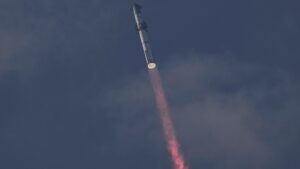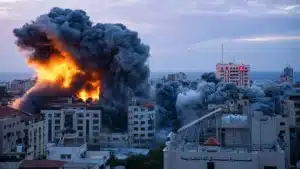Israeli Forces Seize Key Hamas Stronghold in Intensified Special Gaza Operations
In a significant escalation of its ground offensive in the Gaza Strip, the Israel Defense Forces (IDF) announced on Tuesday that its troops had captured a major Hamas military stronghold in the heart of Gaza City. The operation also targeted Hamas militants near a local hospital, marking a deepening of the military’s campaign in the region.
Following days of encircling Gaza City, which effectively bisected the Strip, IDF ground forces have intensified their focus on capturing key command and control centers. The operation is also aimed at flushing out Hamas members from their hideouts on the city’s outskirts. According to the IDF, some of these hideouts are strategically located near or beneath the enclave’s hospitals, which are already under immense pressure.
Residents in northern Gaza reported intense battles overnight, particularly around the city’s outer areas. The Shati refugee camp, located on Gaza City’s northern coast, has experienced heavy bombardment from air and sea in the last 48 hours, according to local reports.
In a significant incident near Al-Quds Hospital in the Shejaiya neighborhood, the IDF discovered Hamas gunmen in a building, allegedly planning an attack on troops. The subsequent aerial assault on this location caused “significant secondary explosions,” indicating a hidden weapons depot, as per IDF’s statement.
Further reports indicated escalating conflicts around Shifa Hospital, Gaza’s largest medical facility. Jerusalem officials claim that this hospital sits atop Hamas’s central command center, a contention that has raised concerns about civilian safety.
The IDF’s recent offensive included targeting a group of approximately 10 Hamas members, followed by an airstrike on a nearby anti-tank squad. Defense Minister Yoav Gallant, in a statement, indicated that the military operation was far from over and emphasized that those responsible for the October 7th atrocities would face severe consequences.
The offensive has also seen the IDF target numerous mortar-launching positions and Hamas infrastructure via naval forces off the coast. Despite these intense operations, no new Israeli casualties were reported. The IDF has confirmed 30 troop fatalities since the beginning of the ground offensive.
Meanwhile, Gaza health authorities, under Hamas control, reported over 10,000 casualties, including women and children. These figures, which are believed to include Hamas terrorists and victims of misfired rockets within the Strip, have not been independently verified.
The Israeli military’s incursion into Gaza was prompted by Hamas’s killing of around 1,400 people in a brutal attack on southern Israeli communities on October 7. Israel’s objectives are stated to be the destruction of Hamas’s infrastructure and the cessation of its control over the territory.
Amid mounting international criticism and calls for a ceasefire, which Israel has firmly rejected, UN Secretary-General Antonio Guterres described Gaza as a “graveyard for children,” drawing sharp criticism from Israeli officials.
Despite Israeli assurances of a one-way corridor for civilians to flee south from Gaza City, the military has accused Hamas of preventing Palestinian evacuations, including attacks on evacuation routes, in an attempt to use civilians as human shields.
The IDF has also released intelligence indicating Hamas’s use of hospitals for military operations, a claim that has been contested by international actors including Qatar and Indonesia.
As the conflict continues, the U.S. has expressed support for Israel’s position against a ceasefire, while also advocating for short humanitarian pauses. In a recent development, Prime Minister Benjamin Netanyahu, following discussions with U.S. President Joe Biden, indicated a potential for temporary halts in the offensive to allow for humanitarian aid and possible hostage releases.
The ongoing conflict in Gaza, triggered by the most significant civilian trauma in Israel’s history, has brought into sharp focus the longstanding tensions and the complex dynamics of the region’s geopolitical landscape.







